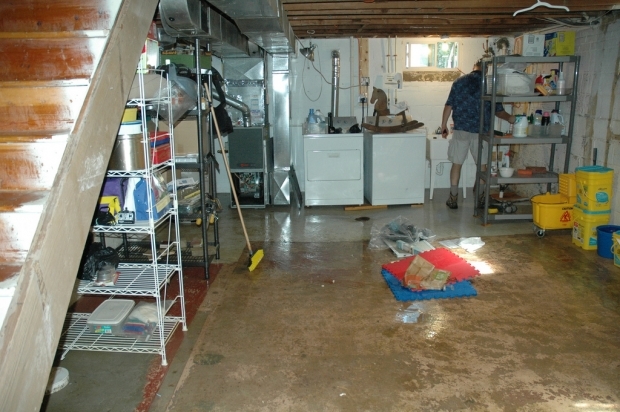Table of Content
- Water Overflow vs. Water Backup: What’s the Difference?
- Why Every Home Should Have Water Backup Coverage & How to Get It?
- Do I need water backup coverage?
- The Best Homeowners Insurance in 2022
- Keeping your insurance watertight
- Does homeowners’ insurance cover injury liability?
- How Can You Learn More About Your Ideal Water Backup Coverage Levels?
This means that if your home becomes unlivable due to water overflow, you’ll be compensated to find alternate lodging while it’s being fixed. Reach out to an insurance agent today if you need help reviewing your current policies and coverages to guarantee you’re prepared for whichever type of water damage your home may experience. We here at Berry Insurance like to include water backup coverage as a standard when we present quotes, as it is an important protection we often see claims for. Loss of Use coverage covers additional living expenses, above and beyond a person’s normal living expenses, as well as loss of rent, if that’s the case. In most cases, a sump pump failure doesn’t make your home unlivable—in other words, you would still be able to live in your home while it was being cleaned and repaired. But in the rare case that it does make your home uninhabitable, having water backup coverage would qualify you for Loss of Use coverage.

Grange Insurance offers an endorsement called Backup of Sewer and Drains that you can add to your homeowners’ insurance policy. Contact your local independent agentfor full details on coverages and discounts. If the policy coverage descriptions in this article conflict with the language in the policy, the language in the policy applies.
Water Overflow vs. Water Backup: What’s the Difference?
If so, you have an increased risk of a costly insurance claim, especially if you happen to have a finished basement. In fact, claims involving finished basements are, on average, 65 percent more costly those in unfinished basements. Unfortunately, there are many things that can lead to water damage, from floods to snowstorms and to water backup from sewers and drains. This is where water backup coverage comes in; it helps protect you from damage from these unexpected sources.

Depending on the damage, repair from a water backup can cost several thousand dollars, making a small annual payment well worth it. If you’re not happy with your current coverage and are thinking about switching car insurance companies, Higginbotham can help. We are an independent insurance broker with access to many auto insurance carriers. We’ll review your needs and help you find the best auto insurance policy for your needs. If you own a home, it’s a good idea to take out water backup coverage. Water backups from sewers, sump pumps, or drains can happen to anyone, regardless of the age and condition of their home.
Why Every Home Should Have Water Backup Coverage & How to Get It?
It is our goal to assure you have the proper care and coverage when it comes to your home insurance, to ensure everything will be flowing smoothly in the case of any damages. Let's quickly go over these two types of coverages and the best way to recognize any future water damages that could be down the pipeline for your home. Water backup coverage can help pay for repairs if either of these things happens and causes your home to suffer water damage. Contact a BNC personal insurance agent for homeowners insurance guidance and solutions.

When you think about how much you would pay out of pocket to repair water backup damage, that small annual premium seems like a no-brainer. This most commonly occurs when a drain, a sewer or a gutter backs up, or a pump fails, forcing water into your home. This could stem from a heavy rain, debris causing a clog, or even root invasion from your yard outside.
Do I need water backup coverage?
The differences between both water overflow and water backup is an important distinction to know regarding your coverages and when making a claim. Before you experience water damage or backup in your home, it’s important to find out how your homeowners policy would respond. You may want to add additional water damage endorsements and/or flood coverage to bolster your protection levels. The other thing that’s not covered by water backup coverage is the actual sump pump or equipment itself unless you have equipment breakdown coverage.
Water backup coverage protects your home and personal property from water damage as a result of sewage or sump pump backups. However, the insurance company may charge you a cancellation fee. You may decide it’s worth paying this cancellation fee to gain coverage that’s better for your needs. However, if the cancellation fee is high and you don’t need to switch immediately, you might decide it’s better to wait until the end of your policy term. But when it comes to determining the difference between water overflow and water backup, it’s important to know what you are and are not covered for by your homeowners insurance.
The Best Homeowners Insurance in 2022
Because our content is not financial advice, we suggest talking with a professional before you make any decision. Find out how stock lending works, the extra income you could potentially earn and the risks you should be aware of. Protect your home and belongings and save even more by bundling insurance with Allstate.

You should also review and refer to the endorsement for full details about the coverage that is offered, covered losses, and any exclusions that may apply. Not sure if your home insurance policy includes water backup coverage? Water backup and sump pump failures are often more contained and cause less damage than natural disaster flooding. More people benefit from sewer backup insurance and sump pump failure insurance because they can happen in any home. For example, if heavy rains seep through your window, water backup wouldn’t cover replacing drywall.
Adding water backup coverage to your home insurance policy could provide valuable and affordable coverage that your standard policy doesn't offer. Homeowners insurance will cover some types of water damage, depending on the source. Water damage from wind-driven rain or weight of snow, vandalism, and burst pipes are covered. Protection from flood damage requires a separate flood insurance policy; damage from sewage, gradual leaks, and neglect are also not covered. Water backup coverage covers water damage caused by sump pump backups, but won't pay to replace your sump pump if it breaks —you’ll need equipment breakdown coverage for that.
Policygenius reports that it costs between $30 and $70 for $5,000 worth of coverage, and an additional $25-$35 for every additional $5,000 of coverage. Insurance companies usually offer between $5,000 and $25,000 in coverage for this type of policy. Water backup coverage is often referred to as sewer or sump pump backup coverage.
It’s important to note that water backup coverage has a set limit (typically from $5,000 to $7,000), and is not a part of your main dwelling coverage. Some companies even have a separate deductible for this endorsement, so it’s important to double check with your insurance agent how much you’ll be on the hook for. Car insurance policies are usually for six months – when you receive your car insurance policy documents and proof of insurance, you’ll see the dates of coverage.
Once the end of the term arrives, the insurance company will probably renew the policy automatically. The exceptions are when the insurer decides not to renew or when you’ve notified the insurer you’re cancelling your coverage. Water damage is tricky when it comes to what is covered by homeowners insurance.
A graduate of Indiana University, Andrew contributes a wealth of knowledge and experience to Finder. When Andrew isn’t writing, reading or practicing insurance, he can be found spending time with his family and playing the guitar. You can even closely monitor your water bill for any spikes that might indicate a slow leak.
When you think of water seeping into your home, the first thing you think of is probably a flood. Water backup is a common and expensive exposure for homeowners so proactive maintenance of appliances, HVAC systems, plumbing, faucets and toilets is imperative. The plumbing inside your home carries wastewater out, but when those lines get blocked, contaminated water can back up overflowing into your home, leaving you with a stinky, expensive mess.

No comments:
Post a Comment